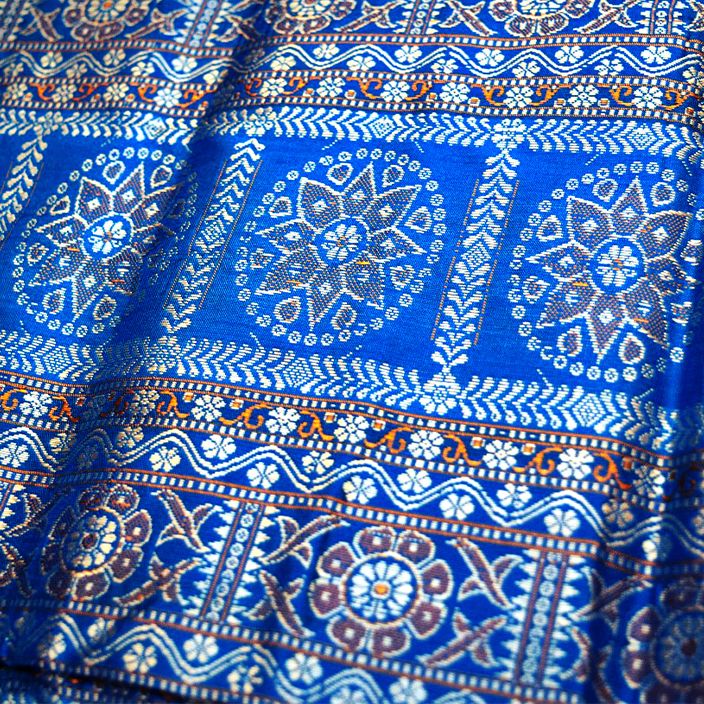For best prices and early deliveries, WhatsApp us at. 918488070070

Bomkai Saree
Owing its name to the place of origin- Bomkai saree was born in the village of Bomkai, part of the Ganjam district in Odisha. This saree is typically woven on hand/pit looms, using low-count cotton yarns. They traditionally have a plain body, a contrast-coloured border, and a heavy pallu. In its earliest forms, bomkais are bright and dark in colour like red, black, blue, and yellow. These colours are obtained by directly submerging the fabric in intense dyes. But the excellent amalgamation of ikkat patterns with woven embroidery distinguishes this craft and makes it stand out. The kind of embroidery on these sarees is anything but basic. The motifs are inspired by folklore, mythology, and tribal art, which are integral in Odhisha's history. A well-made bomkai is the pride of Odhisha, worn at auspicious and vital events.
Tracing Its Origin
The origin of Bomkais can be traced back to around the 1950s, discovered by the "Bhulia" community of weavers. Before this discovery, the norm of this region was plain cotton sarees, but soon the Bomkai became a lavish, luxury saree compared to those plain cotton ones.
From the olden days, woven motifs on these sarees were inspired by elements of nature and mythology. The earliest examples of these motifs are the atasi flower, bitter gourd, birds, and fish.
Ikkat patterns can be seen alongside the paar or border, and the overall body is kept plain with small butis.
How They’re Made
The foremost step in the manufacturing of bomkais is dyeing the yarns. Earlier, only natural dyes extracted from fruits and flowers were used. Even though chemical dyes have substituted natural ones, the colours used remain intense.
Traditionally bomkais are made by the method of weaving on hand-looms. After the fabric has been dyed, the signature motifs on the pallu are woven on these fly-shuttle pit looms with a choice of colourful threads.
Initially, these sarees were made using the age-old "Jaala" technique. The word jaala means a frame with alternating hollow sections (through which the warp threads are lifted).
In this weaving technique, threads are attached to the top of the loom, and the weaver sits at the back of the loom, pulling the threads to make complex designs. But now, with modern market demands, this technique has had a setback due to its high time consumption. Faster methods are now used instead.
Variations Of The Saree
Popular variations include Pasapali, Barpali, and Bapta sarees. The significant difference between the original bomkai and there is the pattern and motifs covering the all-over body of the sarees. As mentioned before, traditional bomkais have a plain body or very small butis. On the other hand, all of these different variations are heavy on the patterns displayed on the all-over body of the saree. However, the border and pallu remain somewhat the same.
Design Elements
Bomkai sarees of Odisha are made of both cotton and silk fabrics. Even though the signature details and designs remain similar throughout, many designers have inculcated various elements to make it more modern and creative.
Bomkai saree is a traditional handwoven Indian silk saree that features intricate Silk ikat weaves and is often adorned with motifs inspired by Paithani sarees.
Image Credits
Yourstory | Womens Web | Utkalika Odisha | The Cultural Heritage | Sutrakaar | Sanskriti | Kusuma | Itokri | D'Source